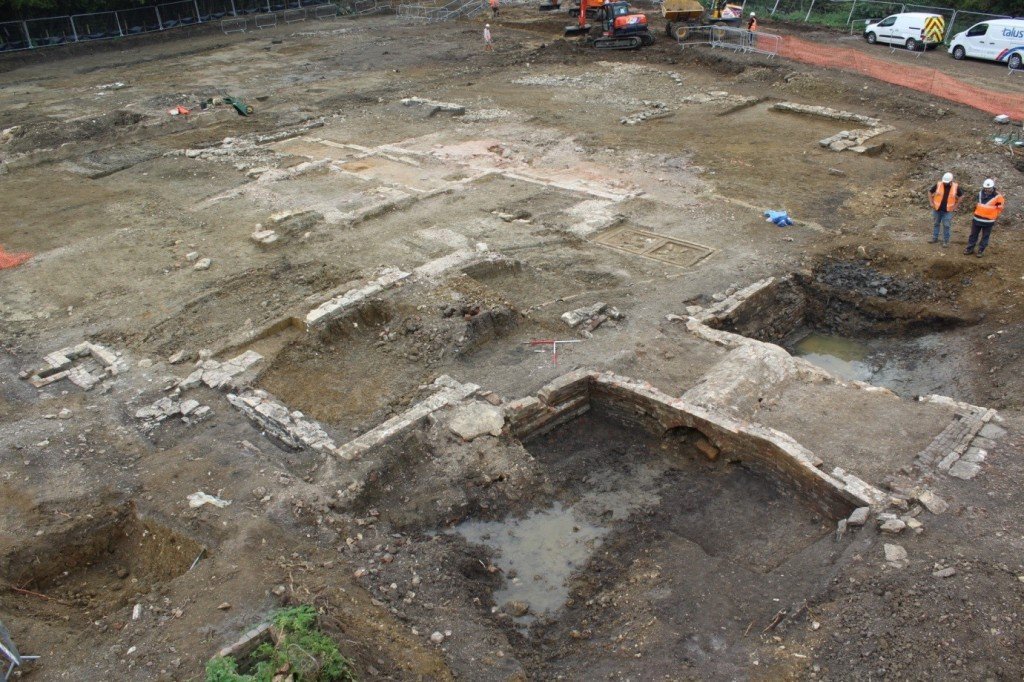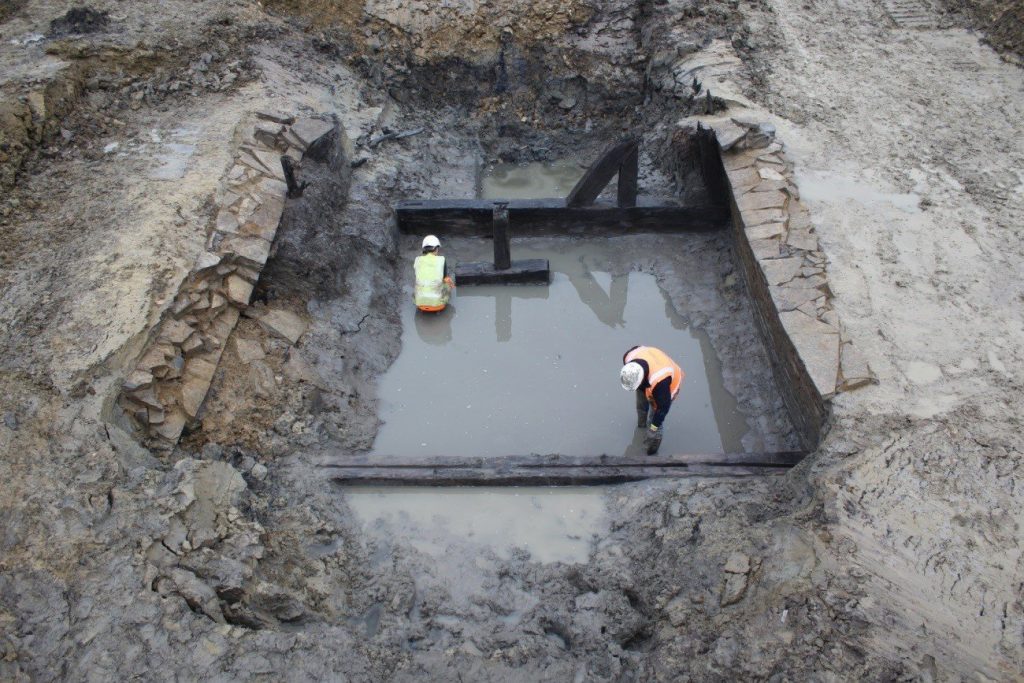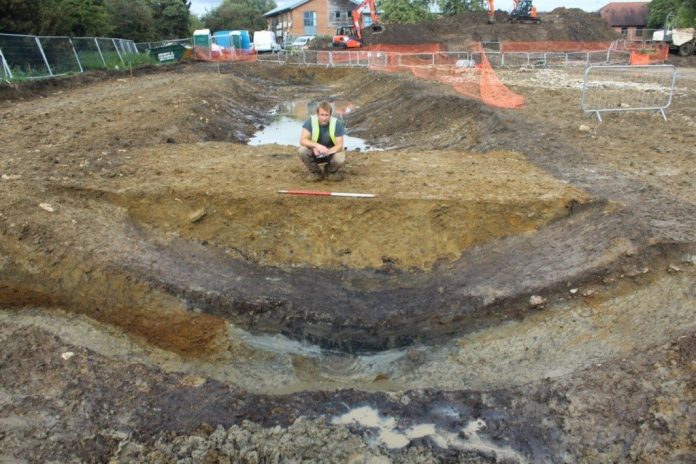Last autumn, a Cotswold Archaeology field team excavated a moated site near Tewkesbury, Gloucestershire. The moat is now surrounded by a large industrial estate and business park, although it originally occupied a rural location. Despite this, it was deeply stratified, requiring three phases of mechanical stripping.
At the west of the site, the first site strip identified the later moat fills as well as the 18th and 19th-century domestic structures, all of which correlated closely with the available 19th-century cartographic evidence. Disappointingly, the moat here was relatively shallow, typically no more than 2m deep, and only 18th to 20th-century artefacts were recovered from within the four hand-excavated interventions.

The island created by the moat contained a number of later medieval/early post-medieval ditches and a stone culvert, which were clearly cut by the moat’s western arm before extending beyond the limit of the site. This suggested that the western part of the surviving moat was not medieval in origin, but possibly part of a much later formal landscaped garden, contemporaneous with the post-medieval buildings.
Outside the moat, immediately to the north, re-stripping revealed the footprint of a large medieval aisled barn. This stone building was very close to a post-medieval brick bridge across the moat’s northern arm, indicating that the building and the bridge were not contemporaneous. The stone barn was at least 35m long, 8m wide, and had eight surviving central stone post-pads within its interior. It had been roofed with Cotswold stone slates, although only the smaller pegged tiles survived.
Hand-excavation within the moat’s northern and eastern arms revealed a strikingly different sequence, and here it reached a depth of 3.5m. Organic-rich fills lay beneath the post-medieval deposits and, importantly, the earliest fills produced exclusively 12th to 14th-century pottery.

A bridge, contemporaneous with the medieval moat fills, was identified crossing the eastern arm, comprising interior and exterior stone abutments of finely dressed and coursed limestone. Two large, squared timbers (each 5m long and 0.4m square) were incorporated into the stonework, founded on the exposed natural clays at the moat’s base. Several upright timbers had been incorporated into the base timbers with mortice and tenon joints. While the interior stone abutment survived in good condition, the exterior stonework had suffered a catastrophic failure, which presumably rendered this bridge unusable.
Source: The post A moated site near Tewkesbury, Gloucestershire appeared first on Cotswold Archaeology.

